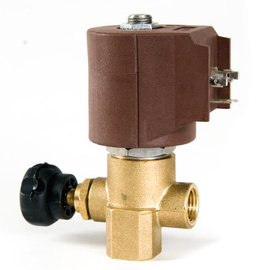
It's essential for steam boilers to equip with safety relief valves, which can prevent the interior pressure of a boiler from rising to unsafe levels. Typically, steam safety relief valves will own a large spring that will add a downward force on a metal piston. When the pressure in a steam boiler rises high enough, it will apply the force of the spring and the piston will lift to relieve the interior pressure outside. So it's important for industrial process safety to consider the design and size of a safety relief valve. The size should accord with the required minimum standard. You can turn to the American Petroleum Institute (API), specifically the Recommended Practice 520 to find out some tips for sizing procedures and formulas of steam valves.
More Instructions
1), Decide all of the possible overpressure scenes for a steam boiler. This is the basic thing for the sizing of the valve. For instance, in a natural gas boiler, it's possible for the gas burner to be out of work, making excess heat for boiling the water.
2), Decide the maximum steam generation capacity and the maximum pressure rating of the boiler. For example, suppose the boiler has a maximum steam generation of 50,000 pounds per hour with a maximum pressure of 300 psi and a temperature of 422 degrees Fahrenheit.
3), Use the formula from API 520 to decide the minimum required orifice size of the valve. The formula is A = W/(C x Kd x P x Kb x Kc) x √(T x Z)/M where A is the orifice area in square inches, W is the steam generation, C is a steam coefficient equal to 330, P is the pressure, Kd, Kb and Kc are all constants equal to 1.0 in this case. T is the temperature of the steam, Z is the steam compressibility factor (assume it is 1.0) and M is the molecular weight of the steam, which is 18.01. This calculates out to be 2.44 square inches.
More Instructions
1), Decide all of the possible overpressure scenes for a steam boiler. This is the basic thing for the sizing of the valve. For instance, in a natural gas boiler, it's possible for the gas burner to be out of work, making excess heat for boiling the water.
2), Decide the maximum steam generation capacity and the maximum pressure rating of the boiler. For example, suppose the boiler has a maximum steam generation of 50,000 pounds per hour with a maximum pressure of 300 psi and a temperature of 422 degrees Fahrenheit.
3), Use the formula from API 520 to decide the minimum required orifice size of the valve. The formula is A = W/(C x Kd x P x Kb x Kc) x √(T x Z)/M where A is the orifice area in square inches, W is the steam generation, C is a steam coefficient equal to 330, P is the pressure, Kd, Kb and Kc are all constants equal to 1.0 in this case. T is the temperature of the steam, Z is the steam compressibility factor (assume it is 1.0) and M is the molecular weight of the steam, which is 18.01. This calculates out to be 2.44 square inches.
 RSS Feed
RSS Feed